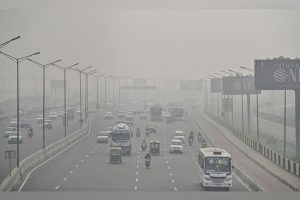As the sun rises over Gurudwara Nanak Saar, perched on the hill overlooking Old Rajinder Nagar in central Delhi, the area is filled with the sweet sound of devotional hymns. The gurudwara fills with devotees. But in recent days, a sense of silence has descended upon Old Rajinder Nagar. A mix of sadness and anger is evident on every face. Three young lives were tragically lost – Tania Soni, Shweta Yadav, and Naveen Delvin – when they drowned in a flooded basement while studying at the Rau’s Study Circle library. Have you ever heard of such a tragedy, where children studying in a library lose their lives? Delhi is heartbroken by what happened in Old Rajinder Nagar. The city is grieving silently, similar to how it wept after the Uphaar fire tragedy. The incident at Uphaar on 13 June 1997, left Delhi and the nation in shock.
Even today, Delhi shudders when looking at the dilapidated state of the Uphaar building. It’s true that Delhi, a rapidly expanding city, doesn’t usually stay bothered by incidents for long. Life goes on at its own pace. Sensitivity has waned. Terrible tragedies are forgotten after a few days. The recent deaths of several newborn babies in a terrible incident in East Delhi also vanished from media headlines within a few days. However, the untimely deaths of three young people brimming with potential have left the capital in mourning. There is a general feeling of sadness.
Advertisement
It’s a state of utter helplessness. We don’t know who to complain to. No one listens. Old Rajinder Nagar is far from an ordinary place. It is India’s first refugee colony. After India’s partition in 1947, lakhs of refugees arrived in Delhi, leaving everything behind. They slept on the streets. Then, in 1948, the government provided 100-square yard plots to refugee families in Old Rajinder Nagar for Rs 4,000 each. The government didn’t demand the full price of the houses immediately. They were provided in easy instalments, enabling these families to rebuild their shattered lives in a new city.
About 30 years ago, H.D. Shourie, the Rehabilitation Commissioner responsible for resettling refugees in 1947, told this writer that Old Rajinder Nagar was named after India’s first President, Dr. Rajinder Prasad. Before that, the area was part of Shadipur Kham pur and Todapur villages. New Rajinder Nagar was established three years later. Shourie was the father of Arun Shourie, a wellknown journalist, writer, and editor. He was also the life and soul of the consumer movement in India. Most of the families in Old Rajinder Nagar came from Peshawar, Dera Ismail Khan, Sindh, and Multan. Perhaps this is why you will find schools named Multan DAV and Dera Ismail Khan School here.
Dera Ismail Khan is near Peshawar. Over the years, many families have moved to other places. The houses had two rooms, a kitchen, and a bathroom. The roofs were covered with asbestos sheets. Some houses still stand as they were then. Looking at them, it seems as if their owners want to remain stuck in the past. It goes without saying that if Shah Rukh Khan read about the death of three youngsters in Old Rajinder Nagar, he too would be saddened. After all, he was born in New Rajinder Nagar. Only a road divides Old and New Rajinder Nagar. He spent the first 15 years of his life there. His family lived there as tenants. Balraj Madhok, a veteran leader of the Jan Sangh, also lived there for decades. Ved Marwah, a former Delhi Police officer who was once Governor of Jharkhand, spent his childhood in this area. Later, his family moved to Khan Market, where his father opened a bookstore called Fakir Chand & Sons. The families living in Old Rajinder Nagar have many heart-wrenching stories to narrate from the partition. They didn’t just leave their homes, cities, and villages.
They lost many loved ones in the riots that broke out during partition. Every August, they go back to that era. But what happened in their neighborhood has made them weep. Talk to anyone, and they choke up over the untimely deaths of the three children. New Rajinder Nagar has remained a residential colony since its inception, but Old Rajinder Nagar has changed rapidly. It has become a hub for coaching institutes for competitive exams. The people running these institutes, along with corrupt government officials, have flouted regulations. They have built buildings and basements wherever they could. The greed for quick money has claimed the lives of three young children. As you walk past the house of the late famous Sindhi singer Lajja Bhatia in Old Rajinder Nagar, you’ll find people of all ages discussing the deaths of the three children. Of course, the wounds of this heartwrenching tragedy will stay open for a long time.
(The writer is a freelance contributor and author of Gandhi’s India.)











